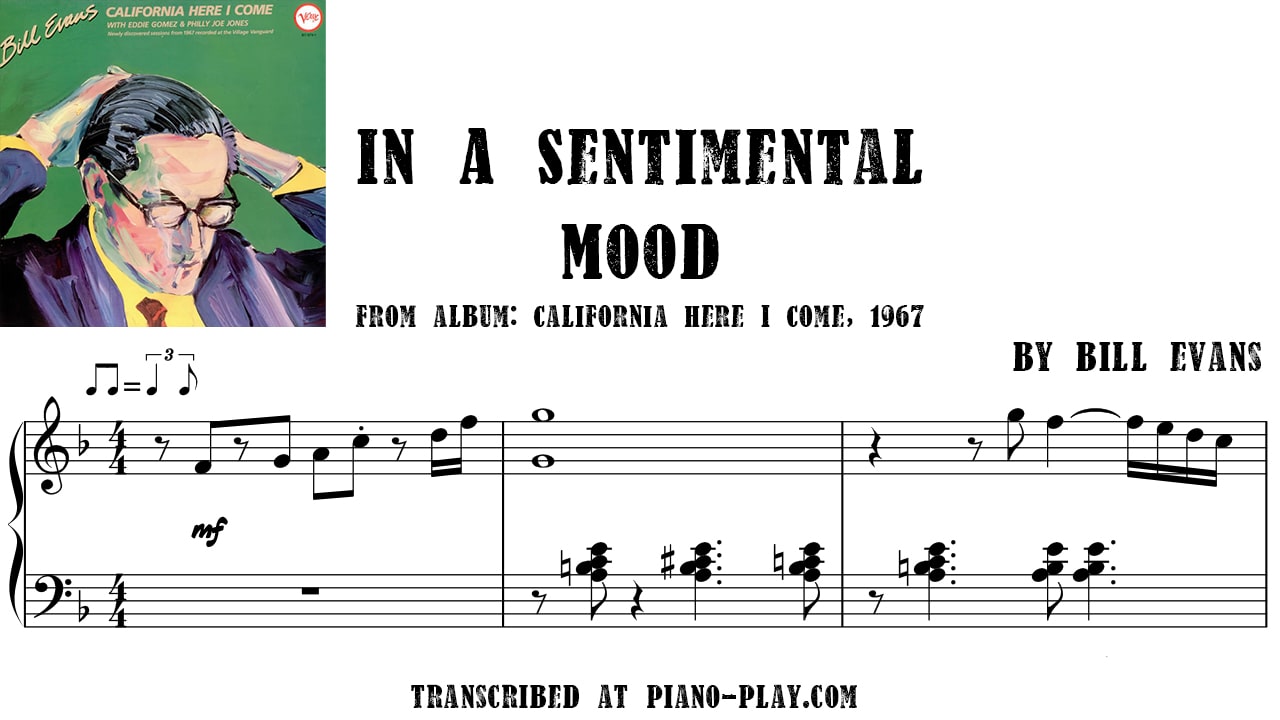

Kind of misses the obviously intended “sourness” of the sentiment for me though.Ĭlue’s in the title, I’d say. You can even turn it into a bizarrely totally “happy” version by using EbM7-BbM7 and Cm7 Fm7 BbM7 at the finish. But then I’ve heard this tune done with all kinds of permutations. The IV chord is definitely played as dominant here, which implies a resolution to Im most naturally. I’d go so far as to call it Weimar witty. It’s a very Kurt Weil slippery, sarcastic kind of thing to do. The original melody doesn’t use major or minor 3rds of the tonic anywhere, and when it resolves it does it ambiguously to 5th or 7th, so you always have the option. This thing really dances and notation can’t really convey that either. Oh, and listen carefully to his articulation. These are really just classical “turns”, but I thought it would be less ambiguous to write them out fully as 16th note groups. In particular, listen for the way he uses different swing phrasing on the ornaments (last A of the first chorus, for instance). You need to listen to the recording to get these nuances down – there’s really not much point attempting to notate them. SWINGīill uses lots of different types of swing throughout the solo. Just leaving them hanging wouldn’t be nearly as strong musically.

Note that he always resolves these time feels back into the home 4/4. Try to hear the overlaid time feel, rather than reading all the tied notes. Another example of this kind of displacement occurs in the second A of the second chorus, where the fourth chords appear. A similar thing occurs in the final A section of the first chorus, but here he overlays a 12/8 feel a 16th note off-whack. In bars 9-14 of the second A section, first chorus, he overlays a 3/4 feel, but displaced by an 8th note. This kind of playing is often much easier to hear than read. One of the things that really makes this solo is that Bill frequently overlays different time feels. It’s instructive to look at the ways he chooses to depart from the given changes – but your LH comping should reflect the harmony implied by his RH line at the time. With all this in mind, I’ve decided to give the original changes rather than attempting to notate precisely what Bill is implying in his lines. The chording underneath the line is usually quite sparse (again very bebop in conception, although Bill’s style here is based on close LH clusters, dabs of more or less ambiguous colour, rather than classic bebop shell voicings). His lines involve a lot of passing-note chromaticism (very bebop) – and often the chromaticism goes far enough to override the straight changes. He’s also very flexible in his approach to alterations on the dominant chords – although a general preference for 7b9 chord-scales is evident. Note that this is in keeping with the subtle ambiguity of Cole Porter’s melody against the harmony. CHORDSīill takes a very flexible approach to the changes – he’s as likely to treat the first chord of the A section as Eb D rather than Eb7, and also occasionally plays the second chord as Bb D. Oh, and note the 4-bar tag ending that all the soloists play on their final chorus. I’ve also taken a few liberties with accidentals where I think it makes for easier reading (particularly in the parts of the tune that are in the relative major, Db). For simplicity of reading, I’ve given it the key signature of Bb major and flatted the third of the key where necessary. The tune is in Bb minor – actually, melodic minor is quite strongly implied. It’s natural, in a way, that the facets of this solo that make it so musically powerful also make it somewhat tricky to notate and read.


 0 kommentar(er)
0 kommentar(er)
